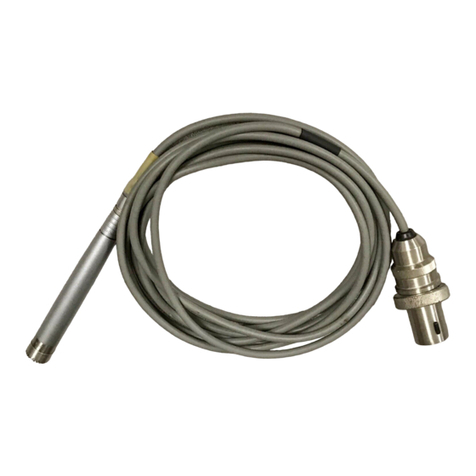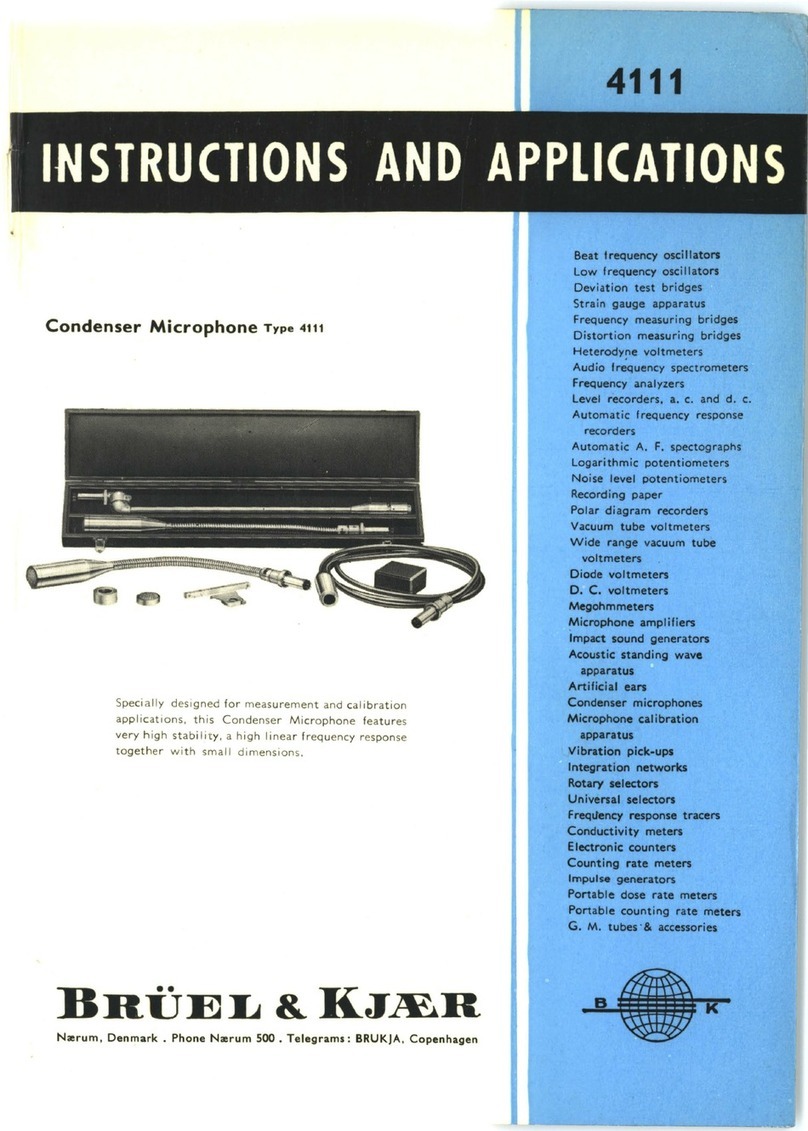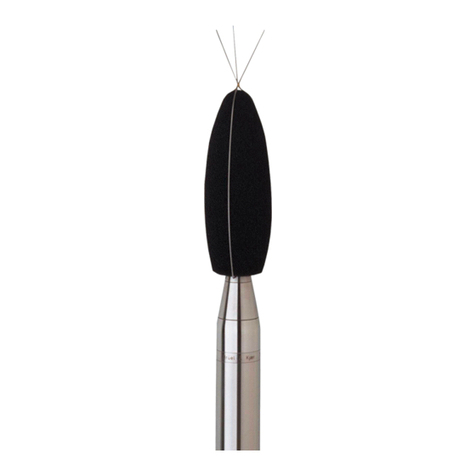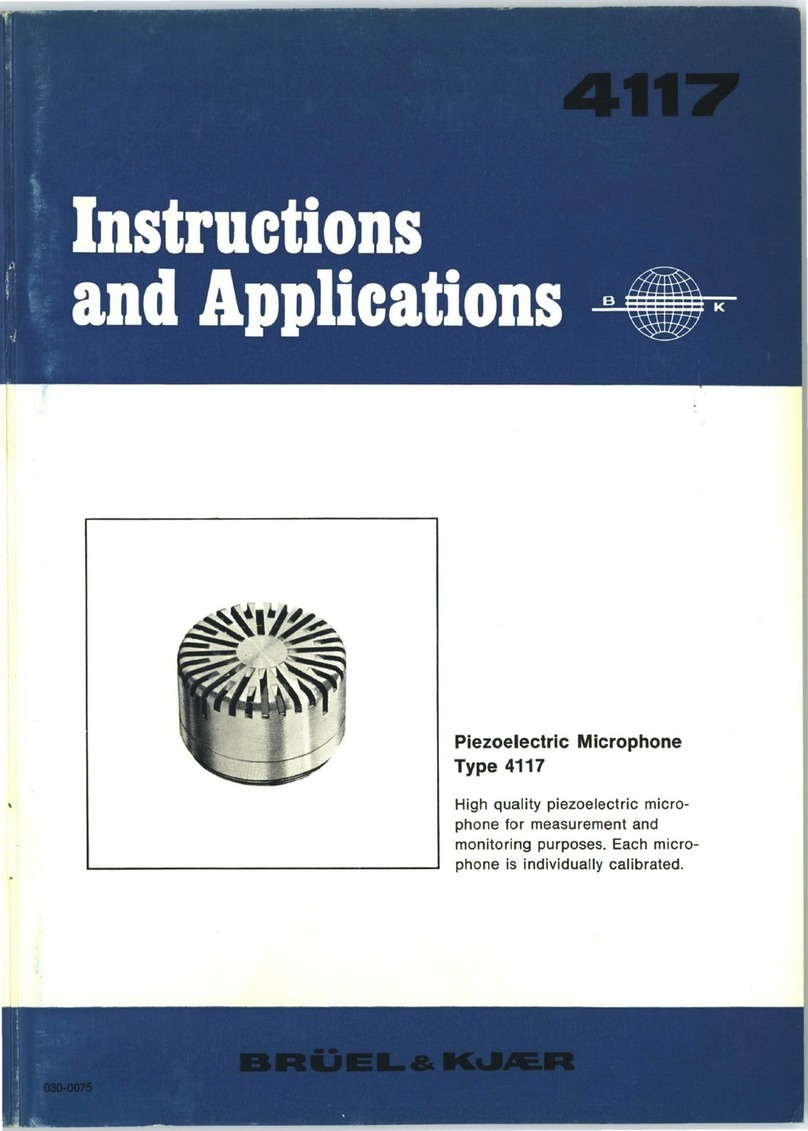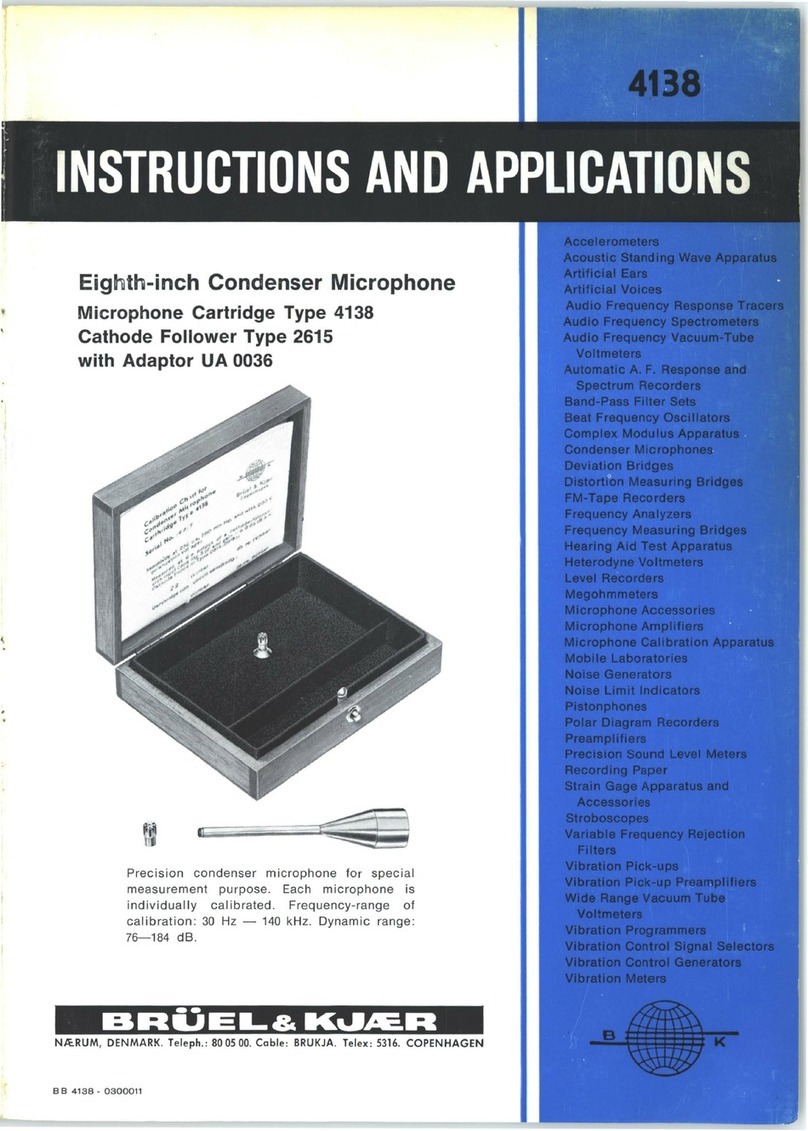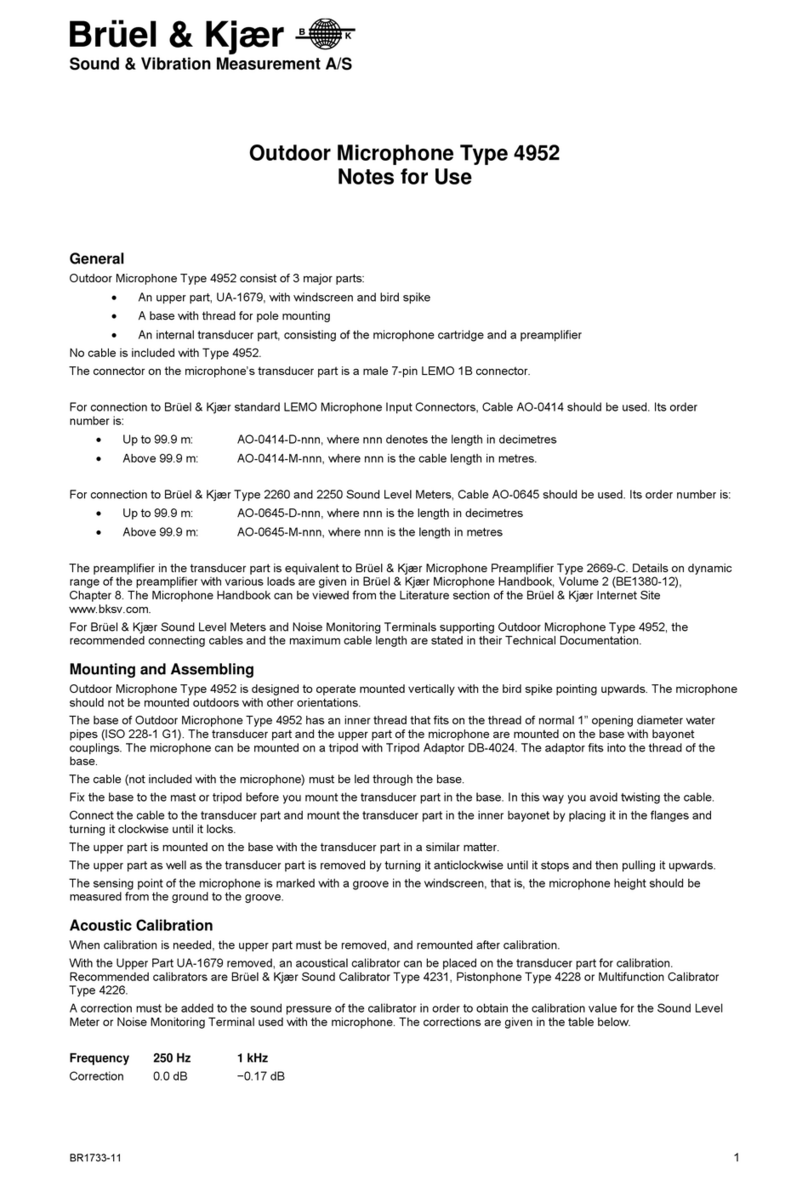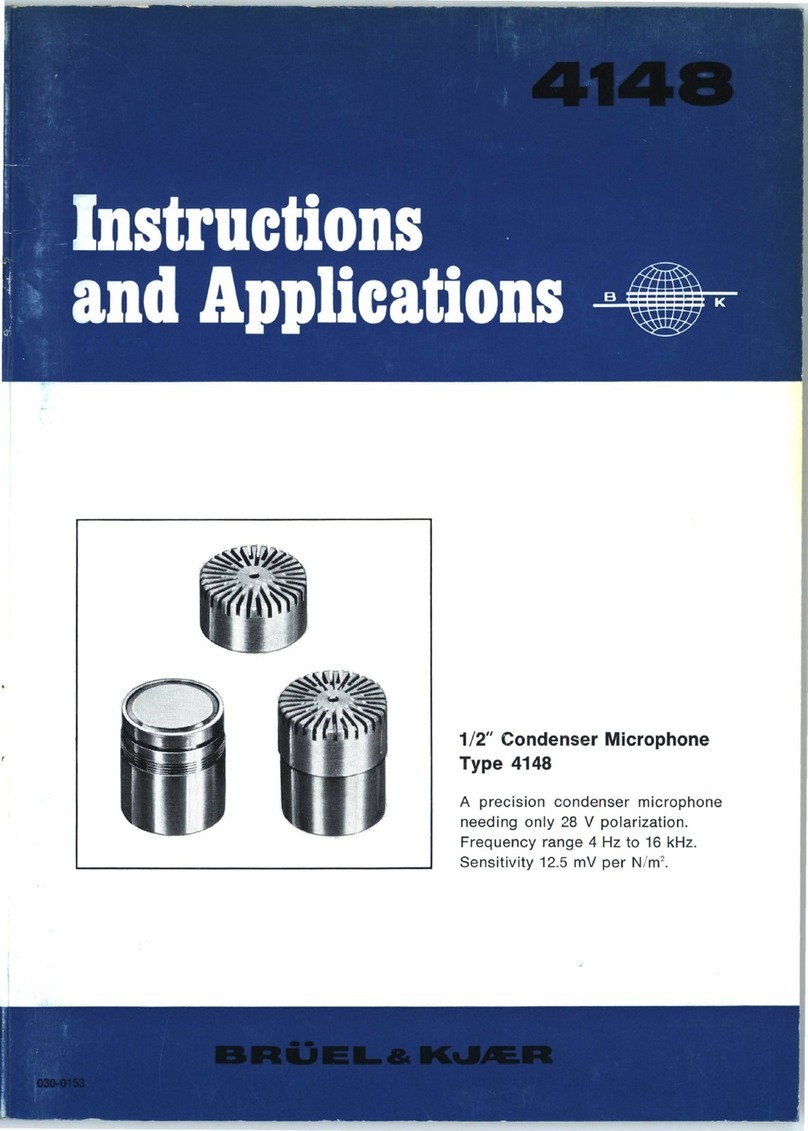
Dual Microphone Supply Type 5935
User Guide
BE1300−12 0−3
Contents
1. Functional Description................................................................................................. 5
1.1 Overview ........................................................................................................................... 6
1.2 Power Source .................................................................................................................... 6
1.3 DC/DC Converter ............................................................................................................. 6
1.4 Channel Amplifier and Weighting Filter........................................................................ 8
1.5 Output Sockets ................................................................................................................. 8
2. Controls and Connections.......................................................................................... 9
2.1 Front Panel ..................................................................................................................... 10
Warning Indicators.................................................................................................... 10
Switches ..................................................................................................................... 11
Gain Adjustment ....................................................................................................... 11
Signal Connectors...................................................................................................... 11
2.2 Rear Panel ...................................................................................................................... 12
Battery Cover............................................................................................................. 12
Power Input Sockets.................................................................................................. 12
Output Sockets .......................................................................................................... 13
2.3 Bottom Panel .................................................................................................................. 13
3. Operation................................................................................................................................ 15
3.1 Applying Power .............................................................................................................. 16
Power Sources............................................................................................................ 16
Fitting Internal Batteries ......................................................................................... 16
External Supply......................................................................................................... 17
3.2 Grounding Considerations............................................................................................. 18
3.3 Polarization Voltage....................................................................................................... 18
3.4 Output Connection ......................................................................................................... 18
3.5 Input Connection............................................................................................................ 19
3.6 Setting the Gain ............................................................................................................. 20
3.7 Overload.......................................................................................................................... 21
4. Specifications ...................................................................................................................... 23
4.1 Amplifier Stages ............................................................................................................. 24
4.2 Power Supply.................................................................................................................. 25
5. Service and Repair ....................................................................................................... 5–1
